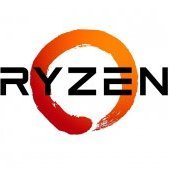Leaderboard
Popular Content
Showing content with the highest reputation on 08/18/19 in all areas
-
There are a lot of us you do not really trust MS, Firefox and Chrome to be our password manager! They already have told us that they snoop into our personal lives and collect as much data about everyone of us as they can accumulate and that they plan on marketing that information. . Perhaps, we are paranoid but with their history and business plan, I would rather err on the paranoid side then truly trusting them with 'protecting' the passwords to my financial and personal life!2 points
-
Hi I just build a kernel to support X570 motherboard (mine is msi x570 ace) and latest AMD Ryzen 2 3000 family CPU. 6.8.3 is out, here is the new kernel and some tweaks: Add Vega Reset Patch Add Navi Reset Patch Enable NFSv4 in kernel(God damned, we finnaly get nfsv4 to work) Add R8125 out tree driver. AMD onboard audio/usb controller flr patch. Provide two version (linux-5.5.8 and linux-4.19.108) in case of bug. Notice that linux-4.19.108 still don't have AMD Zen 2 suppport. Download url can be found in the latest comments. For those who want to use NFSv4: NFSv4 have some change compared to v2/v3, it must have root share and the nfs-utils version can't handle it well.You must add this script to UserScript Plugin triggered when array start: #!/bin/bash # Add NFSv4 root echo '"/mnt/user/" -async,no_subtree_check,fsid=0 *(sec=sys,rw,insecure,anongid=100,anonuid=99,all_squash,crossmnt)' >> /etc/exports # Load configuration exportfs -ra # Tunning mkdir -p /var/lib/nfs/v4recovery sed -i 's@/usr/sbin/rpc.nfsd 8@/usr/sbin/rpc.nfsd 32@g' /etc/rc.d/rc.nfsd # Restart Services /etc/rc.d/rc.nfsd restart And if you have trouble mount nfsv4, you can specify mount vers=3 on client. Edit at 2020.01.31 The procedure of compiling kernel(you can compile it in other linux distribute or linux VMs): download kernel sources from kernel.org, notice that should be same or related version of unraid(like 4.19.94 which 6.8.2 used) unarchive the kernel source zip, like kernel-4.19.94/ copy the patches and .config (important!) from unraid server which located at /usr/src (like /usr/src/linux-4.19.94-Unraid/) to step 2 source directory (Optional) copy custom patches like navi patches or others to source directory too apply patches: find . -type f -iname '*.patch' -print0|xargs -n1 -0 patch -p 1 -i use old config : make oldconfig compile the kernel and modules: make -j5 bzImage; make -j5; make -j5 modules installing the modules, then you can find the module directory in /lib/modules: sudo make modules_install Copy the kernel image: cp sources/linux-4.19.94/arch/x86_64/boot/bzImage releases/6.8.2-4.19.94/bzimage (Optional) ThirdParty modules compiling (like nic r8125 outtree driver): enter the thirdparty driver directory compile the module: make -C /lib/modules/4.19.94-Unraid//build M=(pwd)/src modules install the module to direcotry: sudo make -C /lib/modules/4.19.94-Unraid/build M=(pwd)/src INSTALL_MOD_DIR=kernel/drivers/net/ethernet/realtek/ modules_install you can check whether the module exists in /lib/modules/4.19.94-Unraid/kernel/drivers/net/ethernet/realtek/ archive the modules to bzimage: mksquashfs /lib/modules/4.19.94-Unraid/ releases/4.19.94/bzmodules -keep-as-directory -noappend Then you get the bzimage and bzmodules, copy it to unraid server: /boot/1 point
-
---------------THANK YOU YO EVERYONE FOR ENTERING! The winners have been announced at the end of this thread. --------------- August 29th, 2019 will mark the 14th anniversary of Lime Technology Inc. Much has changed from the early days but one thing has always remained constant: Our awesome community of Unraid users! Seriously, you'd be hard pressed to find a nicer, more helpful online community and we are constantly amazed at the excitement, positivity and all around friendliness of you all. In celebration of all of this, we're giving away 14 limited edition server case badges! See here! To enter to win a case badge, simply comment here. If you'd like, tell us what you enjoy most about your Unraid server, how long you've been a user, or anything else you want to share. It's as simple as that. 14 winners will be selected on August 30th, 2019. See the blog post for full details and pictures! From all of us here at Lime Technology, thank you very much for joining us on this incredible journey. Stay tuned in the coming weeks for more special announcements! https://unraid.net/blog/unraid-14th-birthday-giveaway1 point
-
Getting through my first unRAID installation, it would be really helpful if there was a way to create new users/SMB users who's username is an email address. This allowed me to proper connect to my shares from my Windows 10 machine that uses Microsoft accounts. I'd also think it would me useful for machines that are domain joined an use UPNs for login. I followed @geekazoid instructions for converting a username, and it worked well. Would be nice if you didn't have to SSH into the server and hand edit files though.1 point
-
Of course! So not that then. The speed test came out OK. Also @johnnie.black I'd suggest that an impact to performance that brings a systems to it's knees in the main area it is designed for should not be categorised as minor. Perhaps we should increase the ticket rating which may also get more visibility?1 point
-
There shouldn't be movies folder in unionfs folder before the mount - that was the problem. Sorry should have spotted that earlier - the unionfs folder should be empty1 point
-
Here a guide that shows how to repair XFS filesystem corruption if you are ever unlucky enough to have this happen on your server. Hope its useful if you need to fix it !1 point
-
TBH, I don't use the plugin. But, IIRC a zero pass does nothing but write the signature to the drive. Seeing as how at that point there is no guarantee that the drive isn't actually cleared, then if you add a drive to an array that all you've done is write the signature to it then by definition you have invalidated parity.1 point
-
Can you share the graphs of the controller benchmarks? Drive 9 was found to have a steady read speed over a large portion of the drive when it should be declining for a spinner, this indicates that the drive can send data faster than the controller it's attached to can handle. You also have a drive that has a wave to it. Can you tell me what make/model drive that is? Waves can be a sign of degraded areas. At a minimum, perform a benchmark on it every month or less to see if it holds steady - if it does, it may be how that drive was designed to operate. I'm working on updating the Hard Drive Database web site so it displays the latest benchmark from everyone who has the same drive (instead of averaging all tests which can cause big spikes) to see if that's just how that drive operates.1 point
-
Depending upon your motherboard's design, and which slot you have the card installed, the card may be communicating with the CPU through the southbridge chipset (PCH), which might be the bottleneck. Often the PCH has a smaller pipe to the CPU, which is shared with all southbridge devices, commonly including SATA ports. If the southbridge connection is the limiting factor, then even moving a drive from the H310 to a motherboard SATA port might not make any difference if the motherboard SATA port is also going through the southbridge. I followed the link you provided to your current Unraid server (hopefully it still is current), and downloaded the manual for your mainboard. I see that there is one x16 slot (electrically x8), and two x8 slots (one x8 and the other electrically x4): It looks like the two electrically x8 slots both connect directly to the CPU, so as long as you are using either of those, I think you would be okay. The electrically x4 slot, furthest from the CPU, connects to the PCH - you should not be using this one. Looking at the system block diagram, I see that all 6 SATA ports are connected through the PCH. If the PCH is the bottleneck, and if you have the H310 correctly installed in one of the two x8 PCIe slots connected to the CPU, then moving a drive from the H310 to the motherboard may actually further slow down speeds. In that case, you may want to try the opposite, and move an array drive from the motherboard to the H310, so that you have 8 drives connected directly to the CPU, and only 4 drives connected through the PCH. Lastly, the PCH connects to the CPU via a DMI v2.0 x4 link, which is good for 2GB/s. That should be more than sufficient for 4 array drives (I'm not counting your cache), but if you have the H310 installed in the PCH connected PCIe slot, then you have 11 drives going over this link. 11 drives * 130 MB/s * 1.36 overhead = 1945 MB/s, which is suspiciously close to the 2000 MB/s limit of the DMI connection between the PCH and the CPU.1 point
-
Majority of users use the webUI over the LAN instead of locally to manage the server.1 point
-
Is it recognized in the BIOS / LSI BIOS? If it's not, then no chance that unRaid will see it and the drive will make a good wall ornament1 point
-
So I see where your question arises. In the video, they use the laptop to prepare the USB key. They then transfer it to the desktop PC and boot off it. However, the continue to use the laptop to access the unRaid UI and configure the system. What they are doing here is connecting to the unRaid system over LAN. This is a standard way of going about things, as unRaid can be managed over the network and can run 'headless', but there is another option. They have a display connected to the old GPU in the top slot. This is the 'system' gpu and the one unRaid will use as it's own display. When unRaid boots, it will display all the boot steps here. Normal operation is to boot to a linux command line (just a prompt). However, there is an option at boot to choose GUI mode. In this mode, the full unRaid GUI will be loaded on that system GPU and the system can be administered that way. (it's possible that this video was made before unRaid GUI boot mode existed, I'm not sure) In any case, you have options. You can boot up unRaid in GUI mode and administer the system directly, or you can boot in CLI or GUI mode, and administer the system remotely. If you really want to get fancy, and you have the right graphics card, you can even dispense with the cheap GPU and boot on one of your gaming GPUs, then pass that GPU through to one of your gaming VMs. This is a little more complex, doesn't work with some GPUs and you can't get back to your system GUI when you shut down your VM. YMMV. Check out SpaceInvader1's you tube videos - he covers all of this stuff, and more!1 point
-
Welcome to the fourm, and i hope that you get as much satifaction from unraid as i have.1 point
-
Yes, the boot flash drive must be plugged into the server at all times. Otherwise, it can 'lose' its link to the OS. While the flash drive is not accessed much during normal operation, there are occasions when it must be accessed and it is always written to during shutdown or reboot.1 point
-
Hi @Ali Mohsen If you link to the video you reference, it would be helpful. LTT has many videos about unRaid! But in summary.... unRaid must boot from a USB drive (your licence is tied to the UUID of the drive). Therefore, you would indeed keep the USB plugged in to your unRaid system all the time (or as long as you want the system to be an Unraid machine - you could unplug it and boot another OS from a different system drive). It's unclear where the laptop fits into this. Maybe they just used this to prepare the USB dive (format it and load the unRaid system files?) If that's the case then, no, the laptop is not needed. You'd prepare the USB drive on a laptop (or any other system) and then transfer it to your unRaid server. If you can link to the video, I might be able to provide a clearer answer.1 point
-
Try with only one stick of RAM. If it doesn’t post, swap that for another one. This will rule out one bad stick holding up things. Also ensure memory is in the correct slots / bank for the number of sticks you are using. beyond that, it may be a poorly seated cpu, insufficient power or any number of other problems. does the MB support boot with a single cPU? If so, try each one in turn to rule out a bad processor. I’m sure you have already but RTFM to ensure there are no hardware switches or headers you need to configure. Do you have a different PSU in another machine you can substitute in? disassemble everything and rebuild absolutely bare bare bones components outside the case to troubleshoot some more. good luck!1 point
-
Apparently my USB card is not bootable But this did get me thinking. I ended up moving my unraid flash drive to my USB 3.1 port. For some reason I thought maybe the 3.1 port is on a different internal controller than the other 3.0 ports. It actually worked. I am posting this from my Windows VM within unraid with my array running and the LSI card installed with 1 drive attached. There is definitely something weird with the integrated USB controller on my system and the LSI card. Now that the unraid drive is on a different port, I am having issues with other USB devices attached to the 3.0 ports. For example, I keep getting notified that unraid has lost communication with my UPS. Also my USB keyboard that is passed through to my VM keeps disconnecting. Since I don't need to worry about booting from my other USB devices, I think I'll reinstall that USB card and move everything over to it.1 point
-
I recently went through some difficulty with my Plex docker and permission rights for files. It took a week of back and forth on two sections of the forums before I had the answer. In the end it was a simple fix but it seems like very few know its there or can be an issue. I would assume this could potentially affect or be useful in other dockers as well. --Issue-- I use the Plex DVR with the Linuxserver.IO Plex docker. The video files being created by the Plex DVR were being created with limited access rights for anyone but the user "nobody" the owner of the file. I could not move, rename, delete any files without first running the "new permissions" utility on unRaid. --Cause-- linux has a UMASK default of 022, but this is not compatible with the unraid system. This limits user access to the user/group that created the folder and/or file, in this case "nobody." UMASK of 0000 will mean that all files / folders will be r/w access for all users with the appropriate permissions in unRAID. --Fix-- The Plexserver.IO docker has a variable for UMASK that isn't in the default list when first installed. You can add in the docker settings UMASK_SET, and you then assign 0000 there. This resolved the access rights issues to the DVR created files. If this is helpful to others, certainly can be added to any FAQ1 point
-
Solved Create file called "authorized_keys" in this directory and paste into it the contents of a public key from a keypair To do this, you must have created a public and private key-pair. Use the following steps to do this: From command line (telnet / putty) 1. Type "ssh-keygen -t rsa -f /boot/config/plugins/ssh/<USERNAME>/.ssh/id_rsa" NB. replace "<USERNAME>" with the name of the user. 2. When prompted, type a passphrase if you wish for additional security for the private key. Press enter if not for no passphrase 3. Create a copy the public key into the same location and call it "authorized_keys". eg. cp /boot/config/plugins/ssh/<USERNAME>/.ssh/id_rsa.pub /boot/config/plugins/ssh/<USERNAME>/.ssh/authorized_keys Verify everything has been created correctly. Upon restarting SSH, the plug-in will look for (and find) authorized_keys and copy this file to the users home directory. eg. /home/someuser/.ssh/authorized_keys ---------------------------------------------------------- The private part of the key is "id_rsa". You must take this to the system you intend to connect *from*. If you intend to use Putty to connect, then you *MUST* first convert the private key from standard OpenSSH format to Putty compatible format. A copy of PUTTYGEN for UnRAID has been included. To convert the private key, follow these steps: From command line (telnet / putty): 1. Type "/usr/bin/puttygen /boot/config/plugins/ssh/<USERNAME>/.ssh/id_rsa -o /boot/config/plugins/ssh/<USERNAME>/.ssh/id_rsa.ppk 2. In Putty, create an entry to your UnRAID server and in "Connection -> SSH -> Auth" section of Putty, browse for the file you created (id_rsa.ppk). and then using user@ipaddress:/path/to/folder in Vorta1 point
-
@argonaut It looks like Zerotier removed all prepackaged docker images from their dockerhub repo, so I will need to do some job to build it from scratch or find their sources for it. I will try to make a fresh build when I have time, yeah. UPDATE I built an image and released an update for this docker to include Zerotier version 1.2.12 I wasn't able to use current Zerotier containerized docker build code to launch 1.4.2 for now. I will try to investigate in a spare time and submit a build fix to the Zerotier upstream repo first. I will release an update for this image when it's resolved.1 point
-
I just use a second NVMe for transcoding and other stuff that makes more sense on a scratch disk. This saves some endurance and bandwidth on the main cache SSD, where I'd rather not have its appdata and domains mounts go down, and leaves ram open for more useful endeavors like VMs, dockers, read cache, etc. If you're confident you don't need a huge amount of space for transcodes / scratch disk, a 64GB (or even 32GB, if you don't have that many plex clients) intel Optane will have much higher endurance than a typical NVMe. However, I just use a pair of 500GB 970 EVOs -- one for a standard cache drive + docker/vm storage, the other for transcode/scratch. I'll likely need to replace them every 3 to 5 years.1 point
-
And don't overclock the CPU! You need absolute stability when you run a server and then want to add VM's also. The Ryzen CPU also requires some special setup regarding C-states. Google something like Unraid Ryzen C-states for more info1 point
-
Probably the reason why you haven't received a response is because nobody has the exact same config as yours. With regards to GPU passthrough (and especially primary GPU passthrough), it's impossible to predict with absolute certainty in advance that a certain config will work without actually trying it out (hence without someone with an identical config to yours, there's no way to know for sure). Just looking at your config, I don't see anything that screams it won't work. Some tips in case you decide to try it out: Boot Unraid in legacy mode (i.e. not in UEFI mode). Put the 1060 in primary slot (GPU1) and 1080Ti in secondary slot (GPU2). I have seen more reports of people having problems with the 1080Ti so it's better to have it as secondary, which simplifies things. Make sure Hyper-V is off in your VM template. You are likely to need a 3rd disk to backup your current system, in case you need to go back. It's likely that Unraid will have to format your Samsung 970 and WD Green before they can be used for Unraid purposes.1 point
-
I've un-deprecated the plugin because it does have use and I still regularly use it for convenience. There is now a huge warning though on the main page that if you screw up and delete an entire share because You severely misconfigured an app no longer installed, You checked off the folder to be deleted You answered the question "Are you really sure" Then you're SOL and maybe would be a candidate for the Darwin Awards1 point
-
1 point
-
To disable the need to login as admin:rutorrent at http://<host ip>:9080/ aka HTTP Basic Authentication Per the nginx docs http://nginx.org/en/docs/http/ngx_http_auth_basic_module.html In file `/config/nginx/config/nginx.conf` eg `/mnt/user/appdata/binhex-rtorrentvpn/nginx/config/nginx.conf` You can set `auth_basic` to "off", like so: location / { index index.html index.htm index.php; #auth_basic "Restricted Content"; auth_basic off; auth_basic_user_file /config/nginx/security/auth; } HTTP Basic Authentication will be disabled after restarting the container 👍.1 point
-
1 point
-
Delete --runtime=nvidia and try typing it in manually NOT copying/pasting from the forum. For some reason it adds extra (non-visible) characters.1 point
-
1 point
-
1 point
-
Not sure what their problem was. You should just be able to use the same volume mappings including the plex appdata and it should just work. The plex library with all your movie info, watched status, etc, is in the appdata and their isn't any difference in locations or anything since the dockers aren't really changing anything about the standard plex application install. I did it long ago and several others have also. You might make a backup of your plex appdata just in case.1 point
-
1 point
-
Recently bought a Sharkoon REX8 Value Edition case for 3 x RaidSonic ICY BOX IB-565SSK Used a dremel to remove the usb hub thing from the frame, and put a power switch on the back of the case since the buttons on top of the case has to be removed to fit the top harddrive enclosure. Simple, cheap and good looking case after some modifications1 point



.thumb.jpg.0c644260dacbdbc011d7ad8ba9a1c10a.jpg)


















